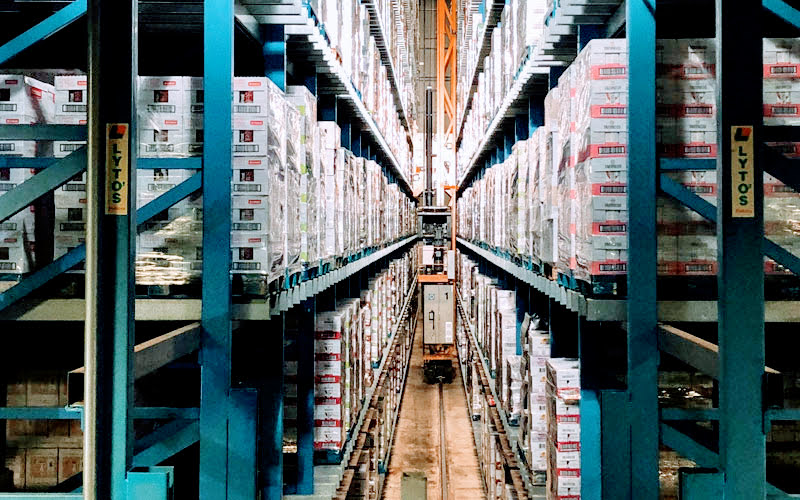Warehouses today are under pressure like never before—delivery windows are shrinking, labor is scarce, and customers expect faster, error-free fulfillment. Traditional tools like manual processes and barcodes can only go so far in meeting these demands. To keep up, facilities need technology that not only captures data but does it at speed and scale.
That’s where RFID comes in. By providing automated, real-time visibility into inventory, assets, and people, RFID has become a critical enabler of warehouse efficiency. But what makes it different from other technologies trying to solve the same problems?
Why RFID Stands Out
Warehouses have tried everything from barcodes to IoT sensors to boost visibility, but RFID consistently delivers the best mix of speed, scale, and accuracy. Unlike barcodes, RFID doesn’t require line-of-sight and can capture hundreds of tags per second in bulk. That efficiency translates into accuracy: while manual barcode scanning yields about 63% inventory accuracy, RFID regularly pushes that figure above 95% (Auburn University RFID Lab).
RFID also accelerates core processes. According to GS1 US, RFID-enabled cycle counts can be performed up to 25 times faster than manual counts, while studies from the University of Wollongong show RFID can reduce shelving errors by as much as 50%. The result is fewer mis-shipments, less rework, and stronger throughput in high-volume environments.
These advantages explain why RFID is no longer optional. Major retailers like Walmart, Target, and Nordstrom now mandate RFID tagging across categories ranging from apparel to home goods (GS1 US, Supply Chain Dive). For warehouses, adopting RFID isn’t just about efficiency—it’s about staying aligned with customer and partner requirements across the supply chain.
A recent University of Wollongong study showed that RFID can reduce shelving errors by as much as 50%—proof of how powerful this technology can be when applied in high-volume, fast-moving environments.
Top Uses for RFID in Warehouse Environments
From the receiving dock to the shipping lane, RFID is reshaping nearly every corner of warehouse operations. Its ability to track items in real time, without line-of-sight, unlocks new levels of efficiency and accuracy that barcodes and manual processes simply can’t match.
Below are the most impactful ways warehouses are putting RFID to work today.
1. Inventory Tracking and Accuracy
Perhaps the most widely adopted application of RFID in warehouses is inventory management. Unlike barcode scanning, RFID enables bulk reads and real-time visibility without line-of-sight.
Key benefits include:
- Accurate inventory counts across the entire warehouse
- Faster cycle counts and stock audits
- Reduction in out-of-stock situations
- Real-time product location data for both staff and customers
Example: Advanced Apparel, a clothing wholesaler, uses RFID to pinpoint the exact location of products across its facilities, improving both operations and customer experience.
2. Asset and Equipment Management
Beyond inventory, RFID can be applied to tools, machinery, and other critical assets. Losing track of equipment leads to costly downtime, but RFID ensures resources are always accounted for.
Applications:
- Tracking forklifts, pallets, and reusable containers
- Monitoring mobile devices and critical equipment
- Preventing theft or misplacement of tools
- Enhancing worker safety by alerting staff to hazardous zones

RFID ROI Calculator
Take the guesswork out of your investment with our ROI calculator. See potential savings and discover how RFID can enhance operations across industries.
3. Workforce and Safety Management
Warehouse environments can be dangerous, with risks from forklifts, machinery, and heavy loads. RFID-enabled badges and tags give supervisors better visibility into worker movement and safety.
How it helps:
- Monitor worker entry/exit in restricted areas
- Improve emergency evacuations by locating personnel in real time
- Track driver hours and break times to comply with labor regulations
- Provide alerts when workers approach hazardous zones
4. Supply Chain Automation
RFID automates many processes that traditionally relied on manual data entry or barcode scanning. By integrating directly with a Warehouse Management System (WMS), RFID streamlines logistics from inbound to outbound.
Use cases:
- Automating goods receiving and shipping validation
- Monitoring downtime to identify bottlenecks
- Enabling safety stock alerts
- Detecting and preventing distribution of faulty or expired goods
5. Cost Reduction and Efficiency Gains
RFID adoption also delivers measurable cost savings across warehouse operations. From storage to labor, RFID helps companies run leaner without sacrificing accuracy.
Efficiency gains include:
- Up to 30% savings on storage costs through optimized space usage
- Reduced administrative workload with automated data capture
- Fewer errors and less rework in shipping and receiving
- Long-term ROI from streamlined operations and loss prevention
💡 Tip – Start with a Pilot: RFID works best when you begin small. Test it on one product line or zone to prove ROI, refine workflows, and build confidence before scaling across the warehouse.
Conclusion
RFID has quickly become an essential tool for modern warehouses. From inventory accuracy to asset management, worker safety, and customer satisfaction, the technology provides the real-time visibility organizations need to stay competitive.
Unit-level tagging may have been the first major use case for RFID in warehouses, but it paved the way for even broader adoption. Today, RFID is no longer a “nice to have”—it’s a foundational technology for efficient, safe, and customer-focused warehouse operations.
Interested in RFID?
An RFID tracking system can help organizations of all sizes improve their supply chain efficiency. Contact the CYBRA team to schedule a demo today.
















